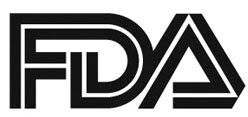FDA Grants Breakthrough Therapy Designation to APR-246 Plus Azacytidine for MDS
The combination of APR-246 and azacytidine was granted Breakthrough Therapy Designation by the FDA for the treatment of myelodysplastic syndromes with susceptible TP53 mutations, Aprea Therapeutics, Inc, developer of APR-246, announced in a press release.

The combination of APR-246 and azacytidine was granted Breakthrough Therapy Designation by the FDA for the treatment of myelodysplastic syndromes (MDS) with susceptibleTP53mutations, Aprea Therapeutics, Inc, developer of APR-246, announced in a press release.1
“Breakthrough Therapy Designation further supports our development program for APR-246 in combination with azacitidine in [patients with MDS and] a TP53 mutation,” Christian S. Schade, chief executive officer of Aprea, said in a statement to the press.
Results from a phase Ib/II study of APR-246 plus azacytidine in patients withTP53-mutant MDS and oligoblastic acute myeloid leukemia (AML) who had never received treatment with a hypomethylating agent were presented at the 2019 American Society of Hematology (ASH) Annual Meeting. The overall response rate was 87% at a median follow-up of 10.5 months. Of the responses observed, 53% of patients had complete responses (CRs), 18% had a CR in the marrow (mCR) plus hematologic improvement (HI), 7% had HI alone, and 9% had mCR. Among the 6 patients who did not respond to treatment, there were 4 cases of stable disease and 2 cases of progressive disease.2
The median time to response was 2.1 months (range, 0.1-5.4) and the median duration of response was 6.5 months. Across subgroups, patients with MDS had the highest CR rate (61%), while patients with AML had a 50% CR rate and no patients with myelodysplastic/myeloproliferative neoplasm (MDS/MPN) achieved a CR. The ORR rate across these subgroups was 88% for patients with MDS/AML and 75% for those with MDS/MPN.
In terms of the mutational burden, patients with aTP53mutation had higher CR rates compared with those without the mutation (69% vs 25%; P= .006), and also showed higher ORRs (93% vs 75%; P= .17). Patients with >10% p53 immunohistochemistry (IHC)-positive primary bone marrow mononuclear cells (BM-MNC) also had a higher CR rate (66% vs 13%; P= .01). The percentages of complete and cytogenetic responses were 41% in patients with MDS (n = 18) and 18% in patients with AML (n = 8). Serial next-generation sequencing (NGS) of TP53showed 39% NGS negativity which was associated with an improvement in overall survival (OS; 12.8 vs 9.2 months; P= .02). MRD negativity was achieved in 11% of patients.
The median OS was 11.6 months (95% CI, 9.2-14) based on the intent-to-treat analysis. Patients who responded to the study treatment had a significantly longer OS (12.8 vs 3.9 months;P<.0001). Additionally, patients who also underwent allogeneic homologous stem cell transplantation (HSCT) had an OS benefit compared with those who did not (16.1 months [95% CI, 11.6-not evaluable] vs 9.2 months [95% CI, 6.3-13.7]), and the 1-year OS in these patients was 66% compared with 29%, respectively (P= .002).
Treatment-related adverse events (TRAEs) occurring in >20% of the patients included nausea/vomiting (58%), dizziness (31%), constipation (24%), neuropathy (22%), leukopenia (22%), and thrombocytopenia (20%). All TRAEs were grade 1/2 in severity with the exception of grade 3/4 cytopenia. Additionally, grade 3/4 febrile neutropenia and anemia occurred in 9% of the patients with MDS and 5% of those with AML. Mortality at 30 and 60 days occurred in 2% of patients and 6% (n = 3).
During the phase II portion of the study, patients received the maximum tolerated dose of APR-246, as determined in the phase Ib study plus azacytidine 75 mg/m2SC/IV × 7 days (days 4-10 or 4-5 and 8-12) in 28-day cycles.
Individuals aged 18 and older with MDS, chronic myelomonocytic leukemia, or AML were eligible to enroll given they had adequate organ function according to study protocol guidelines, documentation of a TP53 gene mutation by NGS ,an ECOG performance status of 0-2, and patients with lower risk TP53-mutated MDS were required to have failed prior treatment with at least 4 full cycles of lenalidomide. The study excluded patients with known history of HIV or active hepatitis B or active hepatitis C infection, certain cardiac abnormalities, Concomitant malignancies or previous malignancies with less than a 1-year disease free interval at the time they consent to the study, in addition to patients who were using cytotoxic chemotherapeutic agents, experimental agents, or nonconcurrent erythroid stimulating agents.
Overall, the combination of APR-246 and azacytidine was found to be well-tolerated with promising responses. A phase III study of the combination versus azacytidine was launched to continue the research inTP53-mutant MDS (NCT03745716).
“Outcomes for patients with [MDS and] aTP53mutation are poor and there are no current therapeutic options specifically for these patients. We look forward to continued interaction with the FDA regarding our ongoing phase III clinical study and our clinical development program to advance APR-246,” Schade stated.
References
- Aprea Therapeutics receives FDA Breakthrough Therapy Designation for apr-246 in combination with azacitidine for the treatment of myelodysplastic syndromes (mds) with a tp53 mutation [news release]. Boston, Massachusetts: Aprea Therapeutics, Inc; January 30, 2020. https://bit.ly/3aZjMp7. Accessed January 31, 2020.
- Sallman DA, DeZern AE, Garcia-Manero G, et al. Phase 2 results of apr-246 and azacitidine (aza) in patients with tp53 mutant myelodysplastic syndromes (mds) and oligoblastic acute myeloid leukemia (aml).Blood2019.134 ( suppl 1;abstr 676).